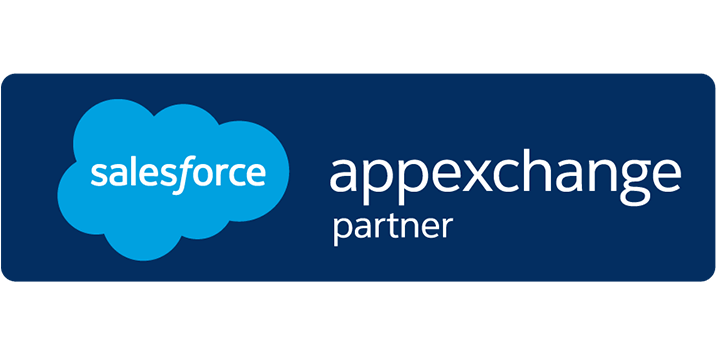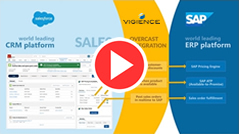Technical Articles
NO CODE/LOW CODE AT SAP AND SALESFORCE: ONE WORKS, ONE DOESN’T
Traditionally, software was made by developers. They wrote source code, which was compiled and executed at run time. The technologies and tools to create software changed over the years, but the principles and requirements stayed the same. To write software, you had to understand the logic behind it, which required a general knowledge of IT infrastructures, know-how on the underlying operating system/web browser, understanding of functional and/or object-oriented programming models, database know-how, and much more. This required years of learning and, to become a truly great developer, you needed years of experience to boot.
Decades ago, we faced a shortage of skilled IT resources, specifically experienced software developers. Because this shortage stalled progress in creating applications to help companies improve their businesses, no-code tools were introduced—applications without coding so that even a business user could create the tools needed to get his job done. One of the first such tools was Microsoft Access, which allowed companies to create database-driven apps without coding in the 1990s.
Fueled by the same principle are low-code tools, which allow you to do 90% of the work in a no-code way and add specific enhancements with only minimal coding and expertise.
In the 2020s, all large software vendors and platforms began offering some kind of no-code tool (Microsoft Power Apps, for example). Today, smaller companies on the market now specialize in no-code tools (Neptune, Mendix, etc.).
In this blog, we’ll compare no-code approaches to managing SAP and Salesforce—and learn why one works while the other doesn’t.
SAP Build
SAP acquired AppGyver and integrated it into its cloud offering. It’s now called SAP Build and runs on the SAP Business Technology Platform (BTP). On a high level, Build works like this:
- You start with an empty canvas on your screen where you drag and drop the UI elements like labels, buttons, checkboxes, or tables.
- You bind these UI elements to data and events.
- You implement the navigation between screens.
- If you want to create the backend of your new frontend application on the SAP BTP, you must do that in a separate step. If your UI has 10 fields, you need to model them a second time for the backend (and don’t forget that the data types and field lengths must match!).
- If you want to integrate with an existing backend like SAP S/4HANA or ECC 6.0, you can leverage OData, REST, or the SAP Integration Suite (for non-SAP systems). This requires a good understanding of each available service. If no service fulfills your needs, you need to develop one. Unfortunately, BAPIs or function modules are not directly supported.
 The SAP Build No-Code Tool
The SAP Build No-Code ToolSAP Build is just one example of many similar tools used in the SAP space, including solutions like Neptune.
Salesforce
Salesforce has a radically different approach to no-code. Its big advantage is that the no-code/low-code tools are backed into the platform and are a fundamental part of it. On a high level, you create an application like this:
- In the Salesforce setup, you create a new business object representing the real-life object that your application should display.
- You add the fields to your new object and define the data type, length, etc.
- You define the actions you want to execute, and which other objects are related.
You are done. The user doesn’t need to make any design decisions, as Salesforce takes care of them.
 Defining the Data Model, Actions, and User Interface in one central place in Salesforce
Defining the Data Model, Actions, and User Interface in one central place in Salesforce
Comparison
SAP Build gives you a lot more flexibility when it comes to defining the user interface, but this typically isn’t a good idea. We know many amazing software developers who are really good at what they do, but even they struggle to create a decent, user-friendly UI (that’s why we have UX designers!). If software developers already face a challenge, how can we expect business users to create a user interface that fulfills basic requirements? Build’s drag-and-drop approach can also result in many applications that look, feel, and behave differently, making it very difficult for the end user to learn and use them.
Salesforce, on the other hand, does not give you such freedom. You define what you want to display and what actions you want and Salesforce does the rest. It will create a list view for you and a detail dialog—one for editing the object and another one for creating new ones. It will make sure that a date field has a data picker and that numbers are aligned on the right. You also don’t need to worry about how the data is stored; the Salesforce platform does that for you. Cleverly, Salesforce takes away a lot of responsibility from the user and it makes sure that all lists, detail and create pages look the same. Buttons are always in the same place, making it easier for users to learn new applications and processes.
With the Salesforce platform, you can create new business processes and applications faster than with SAP Build.
Conclusion
There is no better way to illustrate the difference between the two platforms than comparing how SAP and Salesforce create their own internal solutions. The Fiori-based applications from SAP (whether running on top of an ABAP stack or on the BTP) are written in the classical way: developers code OData services, JavaScript and XML. Salesforce, on the other hand, uses its own no-code tools to build solutions. Do you see the difference?
In our opinion, Salesforce is the better solution for creating new, user-friendly applications without the need to write code. Even if you want to create a new UI on top of SAP, it can be done easier and better on the Salesforce platform.
Using Vigience Overcast, you can easily integrate data stored in SAP S/4HANA, SAP ERP, or any of the cloud-based solutions running on the SAP BTP and either replicate it or show it in real-time within the Salesforce UI. In this way, you can create standalone apps or solutions that combine data from SAP with information from either Salesforce or third-party applications. Overcast goes beyond what SAP Build offers, as you can easily integrate any of the thousands of BAPIs available in SAP.
 SAP Data in Salesforce without one line of code
SAP Data in Salesforce without one line of code
As Salesforce is THE system of engagement in today’s business marketplace, it makes sense to build custom applications on top of it by leveraging its no-code infrastructure and applying Overcast to integrate with any backend system, especially SAP.
If you want to learn more about the possibilities that you get with Vigience Overcast and the Salesforce platform, be sure to reach out to us and subscribe to our newsletter.
AUTHOR

Alexander Ilg








